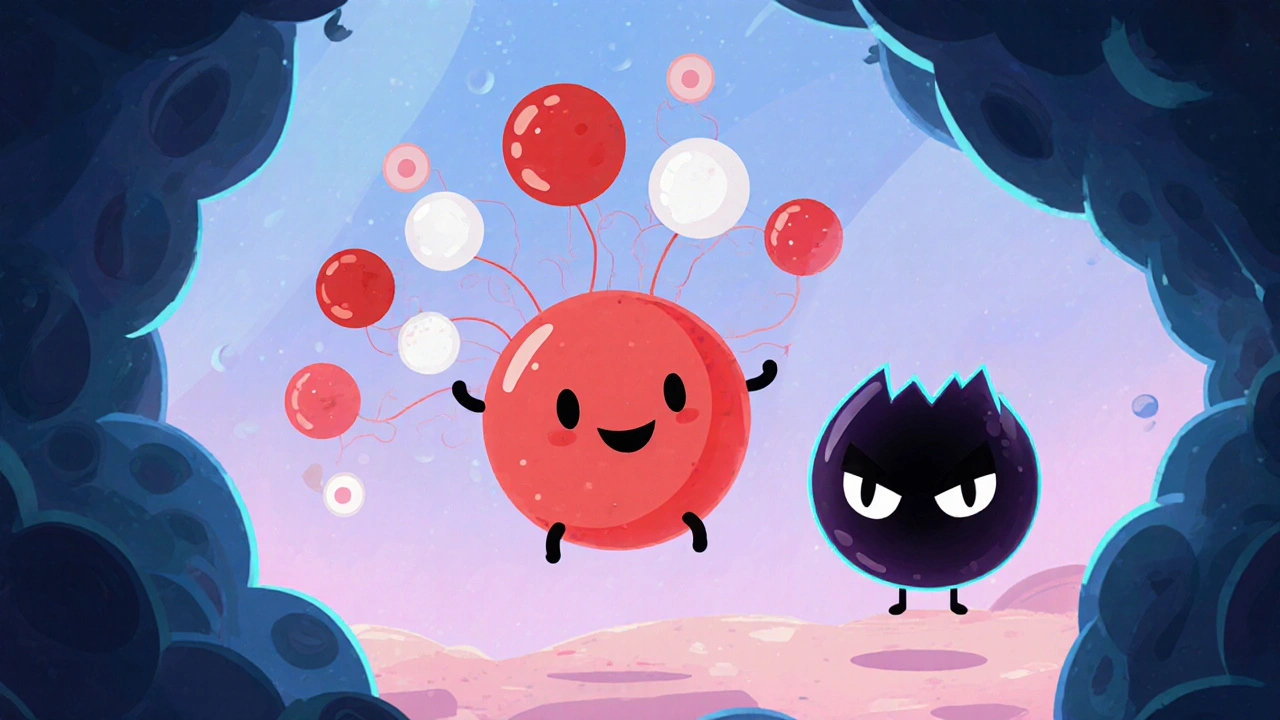Explore how blood cancer forms, from stem‑cell mutations to environmental triggers, and learn the main types, risk factors, and treatment options in clear, science‑based language.
Read more
When we talk about blood cancer, a group of cancers that start in blood-forming tissue like bone marrow and lymphatic system. Also known as hematologic cancer, it includes leukemia, lymphoma, and myeloma—each with different origins but the same core problem: abnormal blood cells multiplying out of control. Unlike solid tumors, blood cancers don’t form lumps. They flood your bloodstream, crowding out healthy cells and messing with your immune system, oxygen transport, and clotting ability.
So what actually starts this process? It’s rarely one thing. Most cases come from a mix of genetic mutations and outside triggers. Some people inherit risky gene changes, like those linked to Down syndrome or BRCA mutations, which raise the chance of developing leukemia. Others pick up damage over time—exposure to benzene, high-dose radiation, or certain chemotherapy drugs can break DNA in blood stem cells. Smoking, heavy alcohol use, and chronic inflammation from autoimmune diseases also nudge cells toward cancer. The scary part? Many people with these risks never get blood cancer, and others with no known exposure do. That’s because our bodies usually fix damaged DNA. But when repair systems fail, and mutations pile up in key genes like TP53 or FLT3, cells start acting rogue.
It’s not just about what you’re exposed to—it’s about how your body responds. Age plays a big role. Most blood cancers hit people over 60 because cell repair slows down over time. Men are more likely than women to get many types, though the reasons aren’t fully clear. Obesity and certain viruses like HTLV-1 or Epstein-Barr have been tied to specific forms too. What’s missing from most discussions? The role of your immune system. If it’s weakened by illness, medication, or aging, it can’t spot and kill abnormal cells early. That’s why transplant patients and those with HIV face higher risks.
What you won’t find here are vague claims like "poor diet causes blood cancer" or "stress triggers it." Science doesn’t back those up. But we do know that avoiding known toxins, staying current on vaccines, and managing chronic conditions can lower your risk. The real takeaway? Blood cancer isn’t random—it’s the result of layered biological failures. And understanding those layers helps you ask better questions, spot early signs, and make smarter choices about screening and prevention.
Below, you’ll find real, practical breakdowns of how specific drugs, conditions, and treatments connect to blood cancer risks—not theory, not hype, just what the data shows.

Explore how blood cancer forms, from stem‑cell mutations to environmental triggers, and learn the main types, risk factors, and treatment options in clear, science‑based language.
Read more